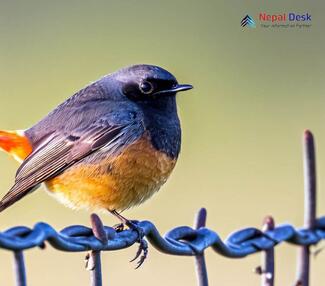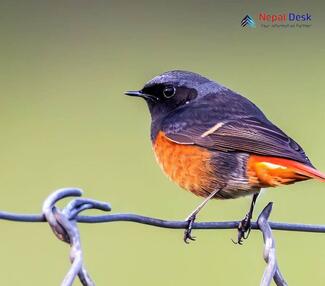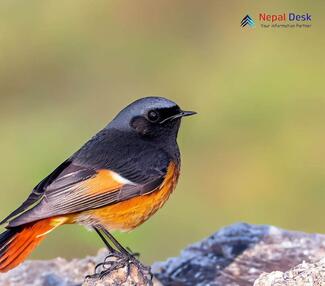Black Redstart Phoenicurus ochruros is a fascinating species recognized for its particular conduct and interesting traits. These birds often attract attention and spark gossip amongst fowl enthusiasts because of their wonderful capabilities and thrilling conduct.
When it involves flying behavior, Black Redstarts show off agile and speedy movements. They are recognized to fly at varying heights, depending on their surroundings and sports. Their flights may be short bursts or sustained for longer intervals, covering huge distances in a single move. The one-time flying length of Black Redstarts can increase as much as several kilometers. They have a particularly wide range, regularly exploring their habitat looking for food and suitable nesting websites.
Aside from their charming conduct, Black Redstarts preserve ecological importance within their ecosystems. As insectivores, they play a crucial role in controlling insect populations, particularly those considered pests in agriculture and gardens. By preying on bugs, those birds make a contribution to the natural stability of their environment and assist maintain the overall fitness in their habitats.
Identifying a Black Redstart is made less difficult by using listening to its specific color and size. These birds have black or dark gray plumage with reddish-orange patches on their tail, rump, and breast. This contrasting color makes them stand out in opposition to their environment. Furthermore, Black Redstarts often cooperate and accomplice with other hen species, together with sparrows or wagtails, developing opportunities for beginner birdwatchers to recognize them by means of observing their interactions with those acquainted birds.
Black Redstarts construct their nests in a number of locations, along with crevices in walls, buildings, and rock formations. They may make use of tree hollows or abandoned nests of different chook species. The nest is normally fabricated from twigs, grass, and feathers, providing a relaxed and properly-hidden area for his or her eggs and younger.
During the breeding season, male Black Redstarts display fascinating behaviors to attract a mate. They interact in territorial displays, vigorously protecting their selected territory and singing melodious songs to set up their presence. The dating between Black Redstarts and different animals is on the whole targeted on competition for assets, including nesting web sites and food. They can also interact with different chook species, engaging in territorial disputes or forming loose associations when foraging.
Black Redstarts have a diverse food regimen consisting mainly of bugs and their larvae. They forage on the ground, looking for prey among flowers or shooting bugs in mid-air with their agile flight. They may additionally eat berries and seeds while insects are scarce. Within their family structure, Black Redstarts commonly form monogamous pairs throughout the breeding season, with both parents participating in nest-building, incubation, and elevating their offspring.
Regarding migration, Black Redstarts showcase a partial migratory behavior. While some individuals may migrate to warmer regions during the wintry weather, others remain in their breeding grounds year-round. The precise migration patterns can vary among male and female Black Redstarts, with some research suggesting that adult males generally tend emigrate in advance and over extra distances compared to girls. During migration, inter-relationships between males and females may be encouraged by means of opposition for restricted sources and the established order of breeding territories.
In Nepal, Black Redstarts can be observed in diverse habitats, along with forests, scrublands, and rocky regions. They are in particular plentiful inside the mountainous areas of the usa, along with the Himalayas. Specific hotspots for watching Black Redstarts in Nepal include famous hiking destinations like Langtang National Park, Annapurna Conservation Area, and Everest Base Camp location. These regions offer appropriate nesting sites, adequate meals resources, and favorable situations for the species' survival.
The Black Redstart, Phoenicurus ochruros, has a huge international range that spans Europe, Asia, and North Africa. Historically, this species has been observed in rocky habitats, along with mountainous areas, cliffs, and urban regions with suitable structures for nesting. It reveals a wide geographical distribution, occupying plenty of habitats inside its variety, from lowlands to high altitudes.
Distinguishing among male and lady Black Redstarts may be hard, as they have got comparable plumage. However, adult males regularly showcase darker black or gray coloration, whilst girls may also have a browner or lighter tone. Additionally, during the breeding season, males show a more vibrant reddish-orange shade on their tails and breast, that is less outstanding in women. It is crucial to notice that there are different hen species that resemble Black Redstarts, which includes European Robins or Common Stonechats. Paying interest to their awesome color patterns and specific behaviors can help differentiate them.
The satisfactory season to identify Black Redstarts varies depending at the place. In fashionable, spring and summer season are favorable seasons for observing those birds, as they're actively engaged in breeding sports and are extra vocal and visible. To spot them, possible appoint diverse techniques, along with walking quietly thru their favored habitats, listening for his or her melodious songs, and scanning rocky areas or perches where they regularly perch to forage or survey their surroundings.
The International Union for Conservation of Nature (IUCN) classifies the Black Redstart as a species of Least Concern. This suggests that, globally, the population is taken into consideration solid and now not presently going through full-size threats. In Nepal, the Black Redstart is a not unusual resident fowl and can be located in the course of the country. To boom the chances of sighting this species, it is really helpful to discover regions with appropriate habitats, including rocky terrains, riversides, and the rims of forests. Keeping a watch on tree perches, riverbanks, and rocky outcrops can greatly decorate the probability of encountering these charming birds in Nepal.




